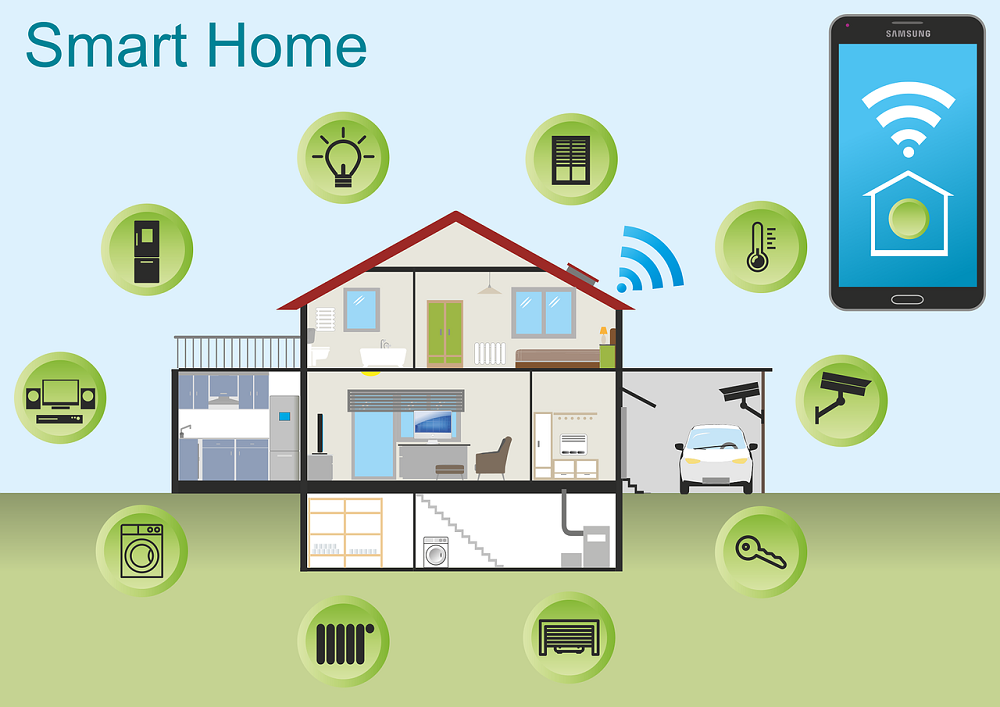If you’ve seen Mr. Robot or have seen the Christmas special of Black Mirror, you might have had an idea of what a smart house is or what it is capable of becoming. You might like your house the way it is now, but what if you could get rid of the little inconveniences that bother you from time to time?
Imagine never having to shiver when you wake up because the thermostat automatically adjusts to the temperature you want. Or locks and security systems can be activated with a few taps of your phone. And even when you’re away, you have the ability to check cameras live.
The future of smart technology extends even to our homes. Amazon’s Alexa is just the beginning. And in 20 years, who knows what technology we can create to totally get rid of the simple problems that bother us?
Unfortunately, until such time, the smart home tech we have today is just a BETA test in comparison to what we could have years from now. And along with this comes the flaws and setbacks as we transition from regular homes to smart homes, and those who have invested in smart homes can attest to it. So, while technology in our homes to make our lives easier is a good thing, this may not be the case for now while we’re still developing this technology.
What’s It Like in a Smart Home?
A smart home, also known as home automation, is when technology controls certain factors of your home that are originally done manually. For instance, every night, why go to the trouble of turning on all the lights, closing the curtains, and adjusting the temperature settings when your house can be programmed to do all that every day with just a few taps?
In the early days, a “smart home” was simply a house with their own washing machine, water heater, or refrigerator because that is what made homes more convenient and easy to live in. But in an age where we have developed a need for so much more, this usually isn’t enough. So, why not take the technology we have used in our phones and in commercial settings and bring it to our homes to make our lives easier?
The Convenience of Smart Security
Not only is it beneficial with your comfort, but also your household’s security. The one flaw our current security systems have is that they’re either meant to deter a criminal from entering (which they sometimes ignore) or they catch the criminal in the act but the police have little leads on where to go from there. Install a security camera in your home while you’re on vacation, for example. When you come back, you find your house robbed and the video shows masked men breaking and entering. You already know someone broke in, but the evidence provides you with very little leads. And it’s too late to try to run after them since they are most likely long-gone.
Smart homes installed with security features, however, take that fear away. Instead of worrying about the safety of your home, you can choose to look at the cameras live. Some smart security systems may also detect motion or unauthorized entry from the doors and windows. Some will not only alert you, it may also alert the police or the security company as well.
But is it worth it?

Subscriptions (and Payments) Galore
As you can already guess, smart homes aren’t cheap. Apart from the monthly subscription fees (and the more features you have, the bigger you pay monthly or yearly), there’s also the maintenance and repair fees – and if it’s new or unique tech, it won’t be cheap either.
If you’re somewhere along the lower and middle-class bracket, you’re going to have to wait until smart home technology becomes as ubiquitous as a fridge in every home before the prices are affordable enough for you to afford smart tech.
It’s Not Really Necessary
Smart technology may sound amazing – and it is. In fact, if you install smart technology in your room and install lights that automatically turn on when you enter, you may be amazed for the first few times. But once you get the bill and the maintenance and repairs for keeping that light in your room, you realize that maybe you’re better off paying for a $10 light switch from your local hardware store and braving the inconvenience of getting out of bed to turn the light off than hundreds of dollars for technology that does roughly the same thing.
Honestly, a lot of the smart technology in the market is purely just novelty. You will be amazed, but once that amazement dies down, you’re stuck footing the bill for something that could cost a lot less without the tech. That’s not to say all smart technology is useless: in 20 years’ time, companies building smart home technology will find better ways to incorporate this tech in our homes – tech with functions that are actually worth paying for.

You’ll Need a Heavy Smartphone
As I said earlier, smart home technology isn’t for those who can’t afford it. And even if you can, you’ll also need to invest in a smartphone with more than your average memory.
At the top of your head, how much memory from your phone do you think you’re using? Now, imagine having 15 different apps added to your phone just for every smart tech installed in your house. If you don’t like a cluttered phone, it’s as simple as putting all these smart home apps in one folder. But if your phone can’t handle the idea of a lot more added apps, you’ll have to invest in either a heavier phone that holds more memory or a second phone dedicated to these apps. And that’s going to cost you extra.
You’ll Have to Keep Updating
Just take a look at Apple and how it handles its iPhones. As of writing, they’ve discontinued manufacturing and selling anything older than the iPhone 7 and its parts. So, if for some reason you still have the iPhone 4 and are looking for a replacement cord for it, you’ll have to look at products sold outside of the Apple Store because, even if you bought it from Apple, they are constantly evolving and expect their customers to do the same.
Smart home technology is similar. It’s relatively new, and it’s going to keep updating and improving. Sure, for a few years, it will update your smart tech and keep you as a loyal customer. But once they’ve evolved and worked out the kinks of their first tech and have begun selling new tech, they’ll expect you to stay updated, even if it means getting rid of the perfectly good tech you have in favor of something new.
The Solution to Smart Home Technology?
This isn’t to say that smart home technology is bad. However, it is a bad investment if you’re thinking about throwing more than half of your savings to keep your perfectly good home updated. If you have a smart phone, good internet, a thermostat, and strong security measures, it’s better to keep it that way than to enter the market immediately and get sucked into a never-ending cycle of updated models that you may not even afford.
My advice? Wait out the smart home technology craze. Don’t be tempted to buy smart home technology this year or the next because you can bet that there will be some kinks to it. And the company that made it will continue to improve their tech. Once you’ve saved more than enough to get into the smart home tech and you feel like the model has drastically improved from its beginnings, then it becomes a smart investment.





